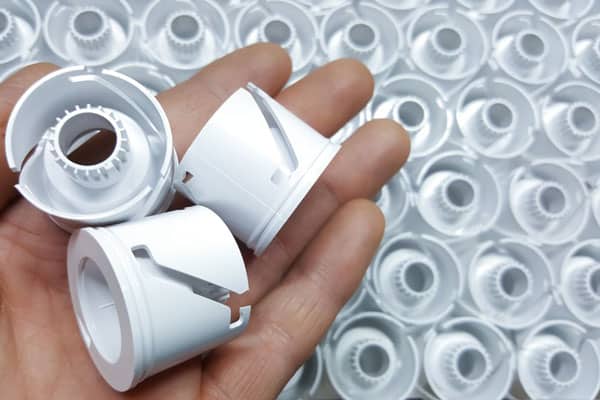You’ve poured your heart and soul into developing a groundbreaking product. The design is sleek, the functionality is top-notch, and you’re confident it will be a hit in the market. There’s just one catch: bringing your vision to life requires custom injection molding, a process that comes with a hefty upfront investment. You’re left wondering, is it truly worth the cost?
Custom injection molding offers undeniable advantages, such as creating unique product designs, enhancing functionality, and streamlining production for greater efficiency. But to justify the investment, it’s crucial to understand the potential return on investment (ROI). This blog post will guide you through calculating ROI for custom injection molding, empowering you to make a data-driven decision that aligns with your business goals and financial realities.
Understanding the Costs of Custom Injection Molding
Custom injection molding involves various costs, starting with the initial mold design and fabrication investment. This encompasses engineering expertise, prototyping, material selection, and skilled labor to create a precise mold tailored to your product.
Once the mold is ready, production costs include the chosen material, machine setup, cycle time, and rigorous quality control measures. Even after production begins, ongoing maintenance is essential to ensure the mold’s longevity and optimal performance, adding costs for cleaning, potential repairs, and proper storage.
It’s crucial to recognize that these costs aren’t fixed; they can fluctuate significantly based on several factors. The complexity of your product design directly influences the intricacy of the mold, impacting both design and fabrication costs. The choice of material also plays a role, as some materials are more expensive or require specialized handling. Production volume is another key factor, as larger orders may benefit from economies of scale, reducing per-part costs over time.
Calculating the Potential Returns
While the initial investment in custom injection molding might seem steep, it’s important to consider the potential financial returns. When designed and utilized effectively, custom molds can lead to significant cost savings. As production volume increases, the cost per part decreases due to the amortization of the mold’s initial cost.
Additionally, a well-optimized mold design can minimize defect rates and reduce waste, lowering production expenses. Custom molds also allow for automation and streamlined processes, improving efficiency and reducing labor costs.
Beyond cost savings, custom injection molding can drive revenue generation. The ability to create unique, high-quality products that cater to specific market needs can command premium prices and set your brand apart from competitors. Innovative designs can capture a larger market share and create a competitive advantage. In some cases, the custom mold can become an asset, with the potential for licensing or selling it to other manufacturers.
In addition to tangible financial gains, custom injection molding offers intangible benefits contributing to long-term success. High-quality products crafted with precision molds enhance brand reputation and foster customer loyalty. Tailored solutions that meet unique customer needs lead to increased satisfaction and repeat business. Moreover, streamlined production processes enabled by custom molds can accelerate time-to-market, giving you a competitive edge in a fast-paced business environment.
Putting It All Together: The ROI Equation
The return on investment (ROI) for custom injection molding can be calculated using a straightforward formula:
ROI = (Net Profit / Total Investment) x 100%
To estimate net profit, subtract your total production costs (including material, labor, and overhead) from your total revenue generated from product sales.
Your total investment includes the initial cost of designing and fabricating the custom mold and the ongoing production costs mentioned earlier.
The time frame you choose for ROI calculation is crucial. Short-term ROI might focus on the first year or two of production, while long-term ROI might consider the entire lifespan of the mold. Custom molds are a long-term investment so a longer time frame can provide a more accurate picture of their profitability.
It’s important to note that this is a simplified ROI calculation. To get a more precise estimate, you can utilize online ROI calculators specifically designed for injection molding or consult financial experts who can factor in additional variables like discount rates and inflation.
Understanding your potential ROI can empower you to make informed decisions about investing in custom injection molding, ensuring that it aligns with your financial goals and overall business strategy.
Conclusion
In conclusion, assessing the return on investment (ROI) for custom injection molding is a multi-faceted process that requires careful consideration of costs and potential returns. While the initial investment can be substantial, the long-term benefits, including cost savings, revenue generation, and intangible advantages, can significantly outweigh the upfront expenses. By understanding the factors that influence costs and returns and utilizing tools like ROI calculators or expert consultation, businesses can decide whether custom injection molding is the right path to achieving their product and financial goals. Remember, a well-calculated investment in custom injection molding can unlock a world of possibilities for your business.
Reference
*Image from https://sybridge.com/

